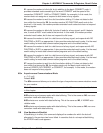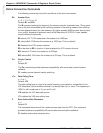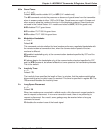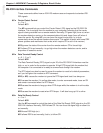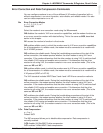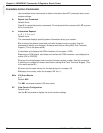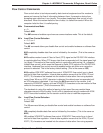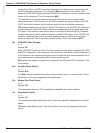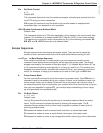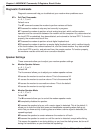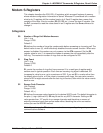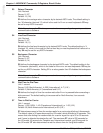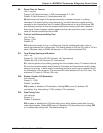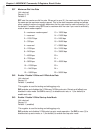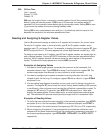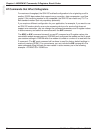
MultiModemISI Hybrid Series, ISIHI-2S 81
Chapter 4—MODEM AT Commands, S-Registers, Result Codes
Modem
\K
n
Set Break Control
n
= 5
Default: \K5
This command determines how the modem processes a break signal received from the
local DTE during an online connection.
\K5 causes the modem to send the break to the remote modem in sequence with
transmitted data, non-destructive, non-expedited.
+ES=6 Enable Synchronous Buffered Mode
Default: none
This command allows an H.324 video application direct access to the synchronous data
channel. On underflow, the modem sends HDLC flag idle (0x7E) to the remote modem.
This special error correction mode is overridden by any of the following commands: &F,
&M, &Q, and \N. +ES=? shows the only allowed value.
Escape Sequences
Escape sequences are also known as escape codes. They are used to cause the
modem to enter command mode from online mode without disconnecting the call.
+++AT<cr> In-Band Escape Sequence
If the modem is online with a remote modem, you can cause the modem to enter
command mode without disconnecting the call by typing an escape code. The default
escape code used by the modem is three plus signs (
+++)
followed by the letters
AT
, up
to 10 command characters (most typically
H
, to hang up), and ENTER. The modem then
escapes to command mode, executes the command (if any), and remains in command
mode. For example, to hang up the modem at the end of a call, type +++ATH <cr>.
A Force Answer Mode
You can use the A command to force the modem into answer mode. Type ATA when in
command mode to immediately bring your modem off-hook, out of command mode, into
online answer mode, and to cause it to transmit its carrier signal over the phone line. If
no responding carrier tone is received by your modem within forty-five seconds (or by the
time you have specified in register S7), your modem stops transmitting its tone, hangs
up, and goes back into command mode.
O
n
Go Back Online
n
= 0, 1, or 3
Default: none
Use the O command to bring the modem out of command mode and back into online
mode. The O command reverses the result of entering the escape code. The O
command brings modem into the online mode (originate or answer) it was in prior to
entering command mode.
O0 causes the modem to exit command mode and return to online data mode.
O1 causes the modem to issue a retrain before returning to online data mode.
O3 causes the modem to issue a rate renegotiation before returning to online data mode.



